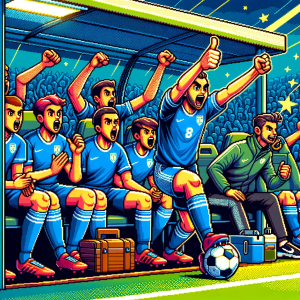
How Coaches Shape Tackling
Tackling is a fundamental aspect of soccer, essential for defense and integral to the game’s dynamics. However, it also presents significant risks, particularly concussions and other injuries. Understanding how coaches communicate about tackling can provide insights into injury prevention and player development. A recent study sheds light on this important topic.
The Theory of Planned Behavior: A Framework for Understanding Coach Communication
The study utilizes the Theory of Planned Behavior (TPB), a psychological theory that links beliefs and behavior. TPB suggests that an individual’s behavior is driven by their intentions, which are influenced by attitudes, subjective norms, and perceived behavioral control. Applying this framework, the researchers explored how coaches’ knowledge, attitudes, and perceived control affect their communication with youth players about tackling.
Knowledge and Experience: Defining Good and Bad Contact
Coaches possess a clear understanding of what constitutes good and bad tackling. Good contact in soccer, as defined by the coaches, involves shoulder-to-shoulder challenges, playing by the rules, and focusing on winning the ball rather than harming the opponent. Coaches emphasized the importance of keeping tackles clean and controlled to minimize injury risks.
Conversely, bad contact includes dangerous behaviors like head-to-head collisions, retaliatory actions, and tackles aimed at injuring the opponent. Coaches noted that improper tackling techniques and reckless behavior significantly increase the likelihood of injuries, including concussions.
Attitudes and Beliefs: The Impact of Injury Awareness
Coaches believe that bad contact is more likely to cause injuries, particularly concussions. This belief is rooted in their experiences and observations. They recognize that actions like spearing in football or aggressive fouls in soccer can lead to severe consequences for young athletes. This awareness drives their commitment to teaching proper tackling techniques and fostering a culture of safety.
Norms and Values: The Role of Coaches in Managing Contact
Coaches feel a strong sense of responsibility for managing physical contact in sports. They believe they have to teach players safe tackling techniques and to emphasize sportsmanship. However, many coaches reported a lack of institutional guidance and support in fulfilling this role. They expressed the need for more structured programs and resources to help them effectively communicate with their players about contact.
Perceived Behavioral Control: Overcoming Barriers to Effective Communication
Despite their commitment, coaches face several barriers in communicating about tackling. One significant concern is creating a fear of injury among players. Coaches stressed the importance of framing discussions positively, focusing on how to perform tackles correctly rather than what not to do. This approach helps maintain players’ confidence and encourages them to engage safely in physical contact.
Implications for Soccer Coaching and Player Development
The findings from this study have important implications for soccer coaching and player development:
- Enhanced Training Programs: Developing comprehensive training programs for coaches can provide them with the tools and knowledge to teach safe tackling techniques effectively. These programs should include clear guidelines and practical communication strategies.
- Positive Messaging: Emphasizing positive messaging in coaching can help maintain players’ confidence while ensuring they understand the importance of safe contact. Coaches should be trained to use language that encourages correct techniques and sportsmanship.
- Institutional Support: Providing institutional support for coaches, including access to resources and ongoing training, can enhance their ability to manage contact in sports. Organizations overseeing youth sports should prioritize safety and equip coaches with the necessary tools.
- Parental Involvement: Engaging parents in discussions about tackling and injury prevention can reinforce the messages delivered by coaches. Parents play a crucial role in supporting their children’s development and ensuring they understand the importance of safe play.
Let us know in the comments!
Understanding how coaches talk about tackling can significantly impact youth soccer. We invite our readers to share their thoughts and experiences:
- For Coaches and Parents: How do you communicate with young athletes about safe tackling? What strategies have you found effective in promoting safety without creating fear?
- For Players: How do you perceive discussions about tackling from your coaches? Do you feel adequately prepared to engage in safe contact during games?
By fostering an open dialogue, we can collectively contribute to safer practices in youth sports and enhance the overall development of young athletes.
Advance Your Soccer Knowledge:
Join the elite circle of soccer aficionados who appreciate the game beyond the field. ‘This Week in Soccer’ bridges the gap between complex soccer analytics and practical application. By subscribing to our newsletter, you’ll gain access to exclusive content, infographics, and forums that will enrich your understanding and love for soccer. Embrace the science and strategy of soccer today. Subscribe and transform your perspective!
About the Author
Jon Scaccia is a youth soccer coach and translational scientist. He has worked with the Exeter United Soccer Club for over five years, focusing on U5 development. In his day job, he works in data evaluation and implementation science.



